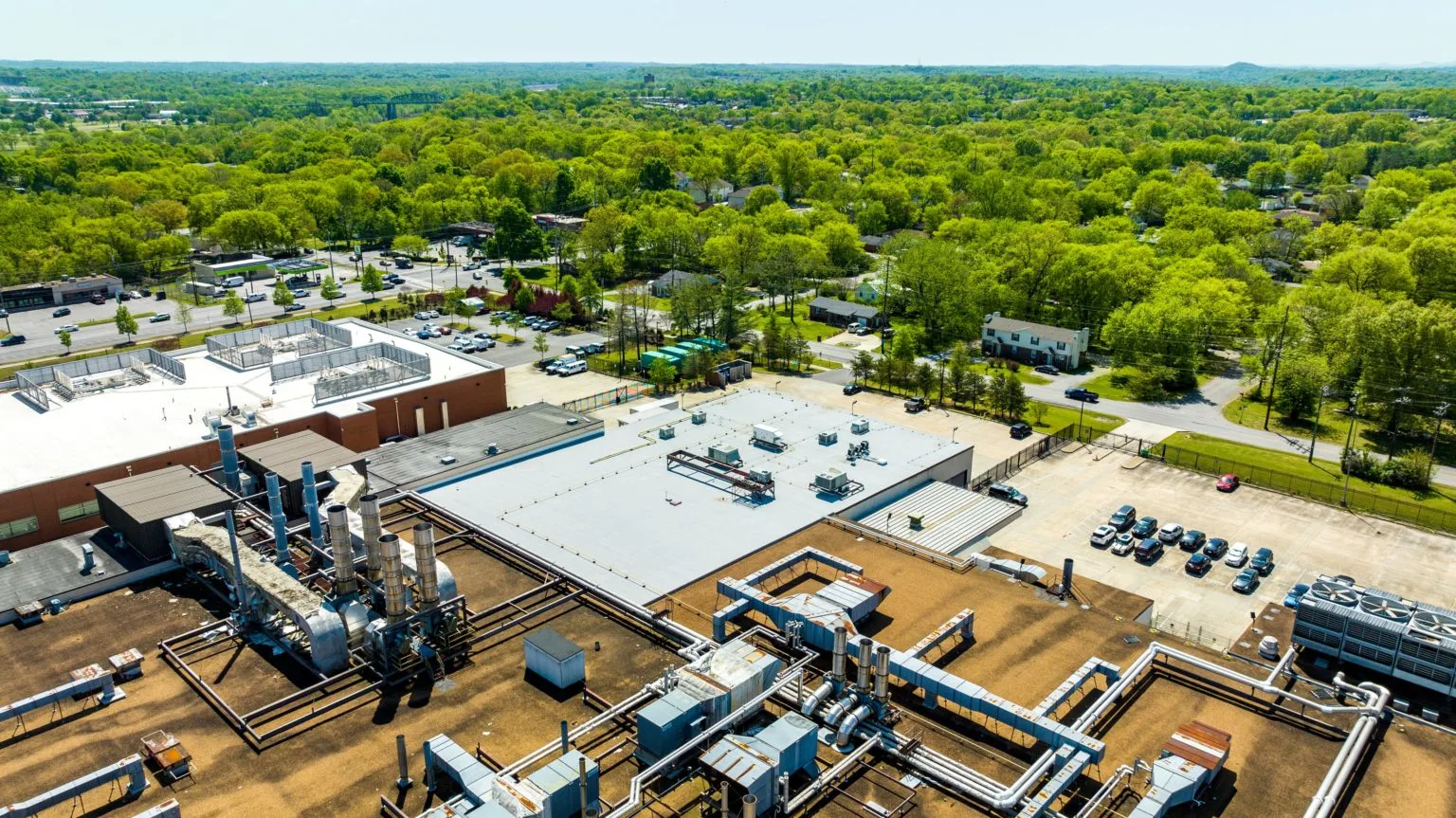Maintaining a commercial roof requires careful consideration, especially when it starts showing signs of wear. Deciding whether to recover your roof or replace it entirely can significantly impact your building’s longevity, costs, and overall functionality.
In this blog, we’ll break down the differences between a roof recovery and replacement, explore key criteria for determining what might be the best option for you, and share why consulting with a professional is essential.
What is a Roof Recovery?
A roof recovery (or restoration) is a stopgap solution that can extend the life of a commercial roof without requiring a complete replacement. There are different types of roof recoveries, but most involve putting a new roof membrane over the top of an existing roof system. For a roof with minor leaks, the new membrane will make it watertight again. Here’s a look at some of the key advantages of a roof recovery:
- Cost Savings: Roof recoveries are significantly more affordable than a roof replacement. Roof recovery requires fewer materials and less labor to complete.
- Environmental Benefits: Reusing materials reduces waste and the use of raw resources, making it an eco-friendly choice.
- Reduced Risk of Exposure: The building remains protected from the elements (like rain and moisture) during the recovery process. Most roof replacements require a complete tear-off.
What is a Roof Replacement?
A commercial roof replacement requires a contractor to demolish all existing roofing materials down to the deck and construct a completely new system. Because a roof replacement requires demolition, construction, and the purchase of new materials, it is the most expensive option for commercial building owners. However, all commercial roofs will eventually need replacement as wear and tear will degrade all roofing materials over time. Here’s a look at some of the advantages of fully replacing your commercial roof:
- Long-Term Performance: Replacement allows for complete renewal of the roofing system, including structural upgrades.
- Custom Upgrades: Building owners can incorporate better insulation, improved drainage, and other enhancements.
- Structural Integrity: Ensures the roof deck and other components are fully functional and secure.
A Checklist of Key Considerations
Not all roofs are suitable for recovery. Here’s a checklist to help determine if recovery or replacement might be best for your commercial building:
A Roof Recovery May Be Viable If:
- The existing roof is structurally sound.
- Minimal moisture is present in the insulation or roof deck.
- Local building codes permit an additional roof system.
- The current roof isn’t already a recovery system.
A Roof Replacement May Be Necessary If:
- The roof deck is compromised or significantly damaged.
- Moisture intrusion has affected a large portion of the roof system.
- Local codes prohibit another recovery layer.
- The roof’s existing damage exceeds repairable limits.
Always Consult a Roofing Expert
Determining whether your roof needs recovery or replacement isn’t a decision you should make alone. If you’re not following a preventative roof maintenance plan, you might not even notice a small leak that could turn into a major problem—and even prevent recovery as an option.
Consulting an experienced and trusted commercial roofing contractor like Maxwell Roofing ensures that your choice aligns with the condition of your roof, your budget, and your long-term goals.
A Partner You Can Trust
At Maxwell Roofing & Sheet Metal, Inc., we’ve spent nearly 70 years helping businesses make informed decisions about their commercial roofing systems. We’re committed to partnering with our clients to help you every step of the way. Contact us with any questions about taking the next step toward protecting your investment.

